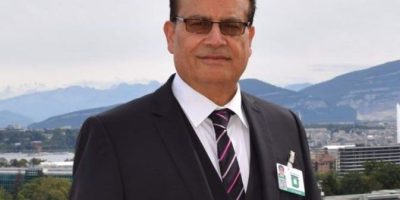OHCHR Report on China’s Xinjiang: Negating the Realities

By Irfan Shahzad Takalvi
What value does a document released by the head of an international body just minutes before her retirement actually assume, especially so when the document is clearly aimed at portraying a certain country or a region in a negative way?
Nothing indeed! A lie repeated a thousand times does not become a truth, in any way.
The recently released report of the Office of the UN High Commissioner for Human Rights (OHCHR) on China’s Xinjiang serves only one purpose: to malign and vilify China on the basis of acts that China never committed.
It is not hard for experts of the subject and global researchers with any sound standing to ascertain the intellectual weigh of an assessment which itself admits that “… the available information at this stage does not allow OHCHR to draw firm conclusions” but in the same sentence goes on to add that “… it is clear that the highly securitized and discriminatory nature of the VETC facilities, coupled with limited access to effective remedies or oversight by the authorities, provide fertile ground for such violations to take place on a broad scale.” And VETC here stands for Vocational Education and Training Centers in Xinjiang that China has actually wound up for long, after having served their purpose.
Further, the report itself mentions that it is based on “40 in-depth interviews with individuals with direct and first-hand knowledge of the situation” in addition to researches of think-tanks and reports of the media. Can a document of this nature and scope be expected to do justice to such a complex issue? Of course not.
The document is hardly anything more than yet another move in the series of consistent attacks on China in the name of human rights’ violations in Xinjiang. And the propaganda, all of it, derives only from false, concocted, angled reporting on sections of international media; biased and unverifiable researches and accounts of a handful of exilees’ from Xinjiang living abroad.
The situation on the ground in Xinjiang is totally different. The autonomous region has witnessed all-round development and progress over past seven decades, much more so in recent few years, and all the ethnic groups are reaping the benefits of this turn around. China’s policy of fighting terrorism and extremism is a notable success; and it has ensured durable peace not only inside Xinjiang and rest of China, but has also contributed positively to safety and security of countries bordering Xinjiang.
I, as a researcher and media contributor, have to repeat here once again that I have been lucky to visit Xinjiang some ten times during past decade and a half; the first visit being in 2008 and the last one in 2019. I have personally met and interacted with people of almost all ethnic groups living in Xinjiang. Beyond visits, virtual contacts with friends in/from Xinjiang are a regular feature for me.
People, an overwhelming majority of them, are happy and content; living fulfilling, joyous lives. Their living standards, quality of life, livelihoods have been transformed immensely – all for the better – in recent years; thanks to the untiring efforts of China’s central and Xinjiang’s regional authorities. They are free to practice, preserve and develop their faiths, beliefs and cultures: the same is supported by the state and authorities, rather.
VETCs actually educated, trained and prepared a large number of victims of extremist agendas for better lives; equipping them with skill sets needed to thrive in a fast developing, modernizing economy.
Ironically, the contents of OHCHR’s assessment are also contrary to what the former High Commissioner herself expressed, on the conclusion of her visit to the region, in May this year.
Xinjiang today is not only developing fast internally, but playing a pivotal role in forwarding the regional and global agenda of integration and cooperation – the Belt and Road Initiative (BRI). I personally see it as precisely the reason that why the West, particularly the US, is so bent upon painting Xinjiang in a specific, negative light.
Economies of all regional countries are so closely linked with that of Xinjiang; and I have written already that attacking Xinjiang actually amounts of attacking the ‘Heart of Eurasia.’ It – Xinjiang – is exactly so, the heart of the re-emerging Eurasian continent. If Xinjiang grows, the entire region would benefit. Trade figures already prove that. Heinous efforts to arrest the development of Xinjiang may better be seen in this context. Attacking Xinjiang means attacking the core of BRI; it means attacking the long awaited Eurasian integration.
A large number of counties – actually around a half of the UN membership – have repeatedly challenged the unfounded propaganda against Xinjiang in recent months and years; and many also called upon OHCHR not to release the report which serves no constructive purpose. Yet, the OHCHR went ahead with its plans, visibly in very questionable manner.
In fact, subjecting the people of Xinjiang to sanctions, targeting their economy and development, and casting dark shadows over the future of the region’s inhabitants in the name of perceived violations is itself one of the worst forms of human rights’ violations. The people of Xinjiang are unfortunately suffering from this violation of human rights at the hands of a handful, powerful, dominant nations; without any logical, ethical and legal basis. This must end, immediately.
The author is Founding President of the Eurasian Century Institute (ECI), Islamabad-Pakistan and may be accessed at irfanzad@gmail.com
Related News

Government Employees and Tax Collection
by Muhammad Mohsin Iqbal Tax collection has always been an indispensable pillar in the architectureRead More

Pakistan Military at the Next Level
By Qamar Bashir What happens when a nuclear-armed country—surrounded by rivals, forged by decades ofRead More


Comments are Closed